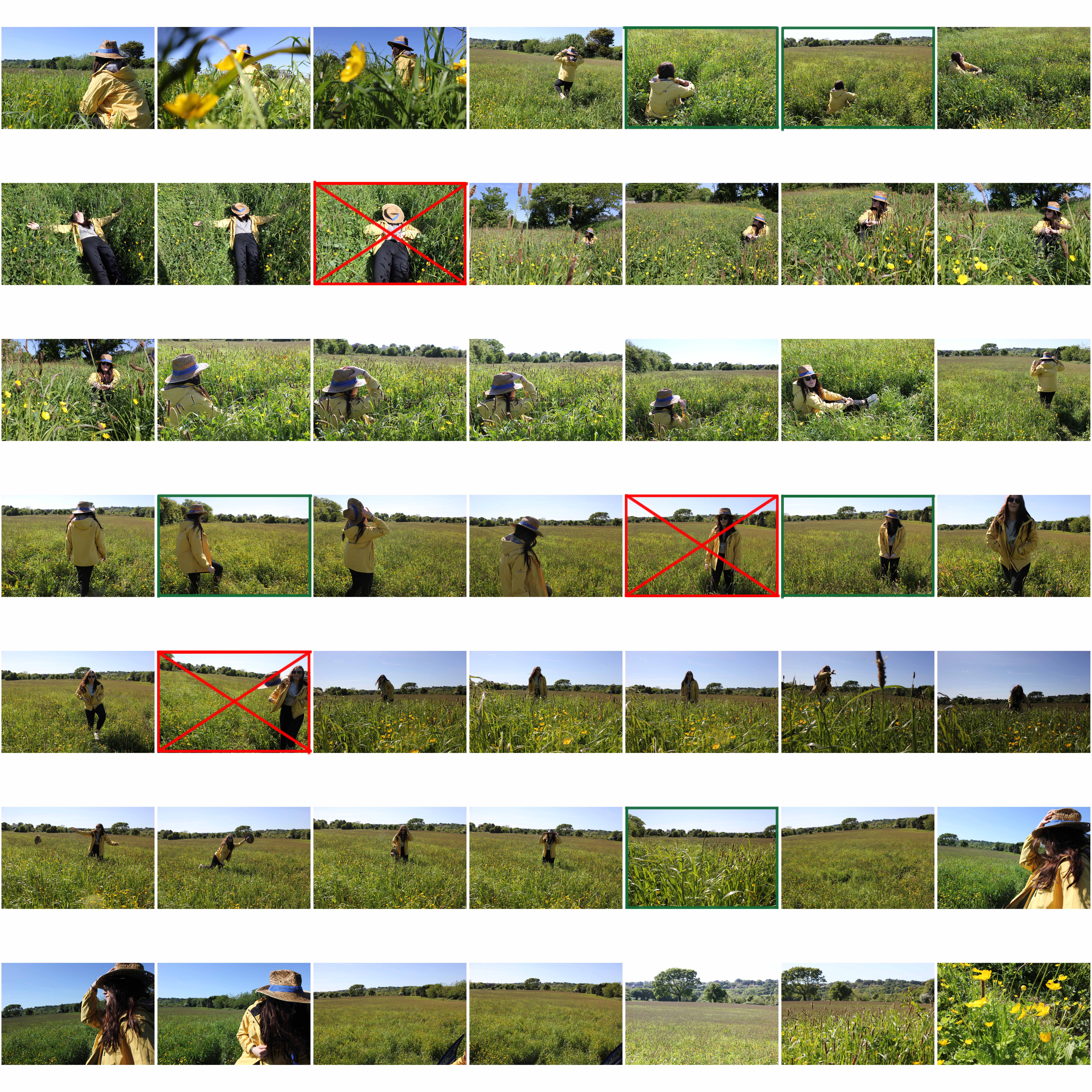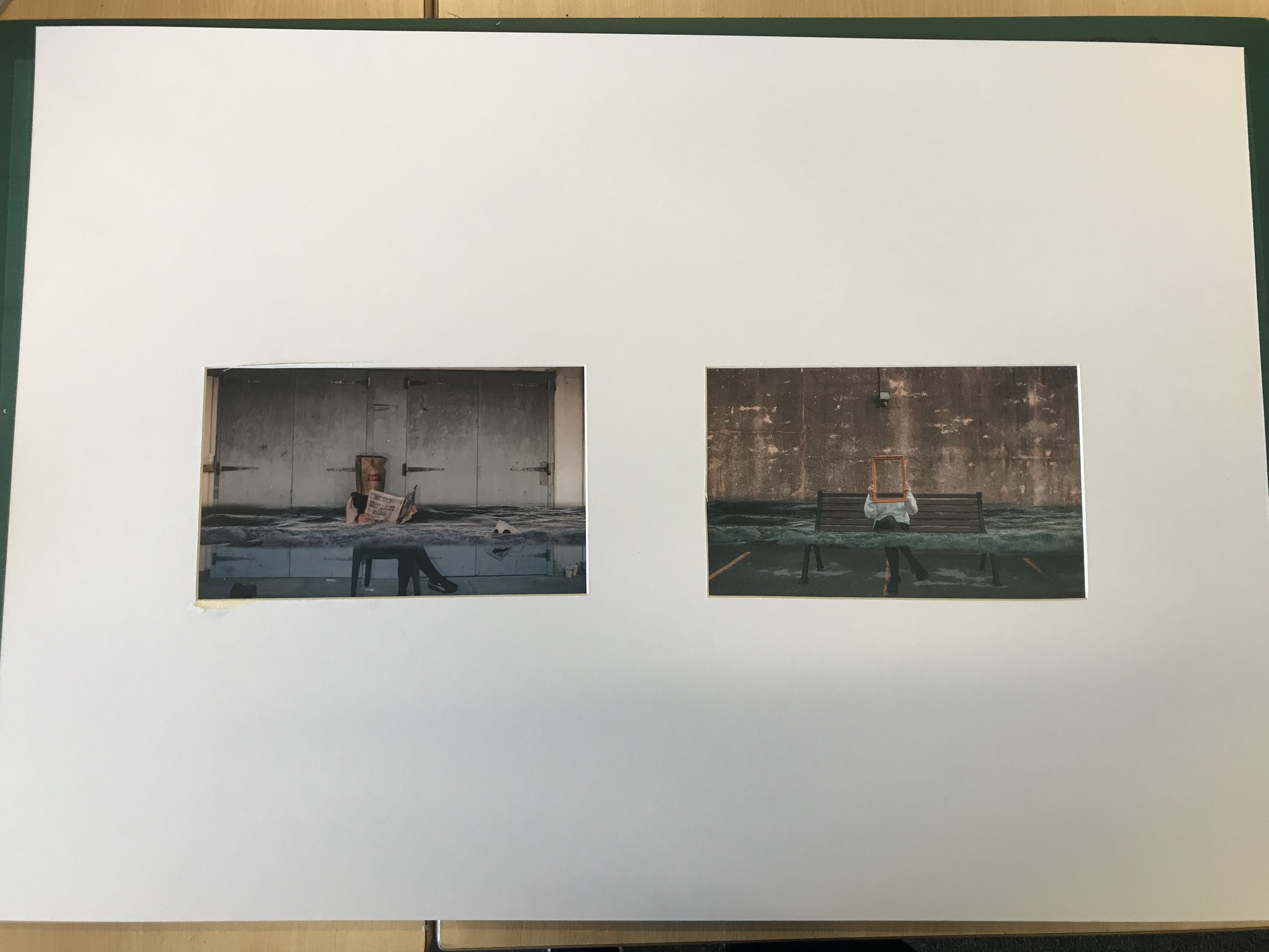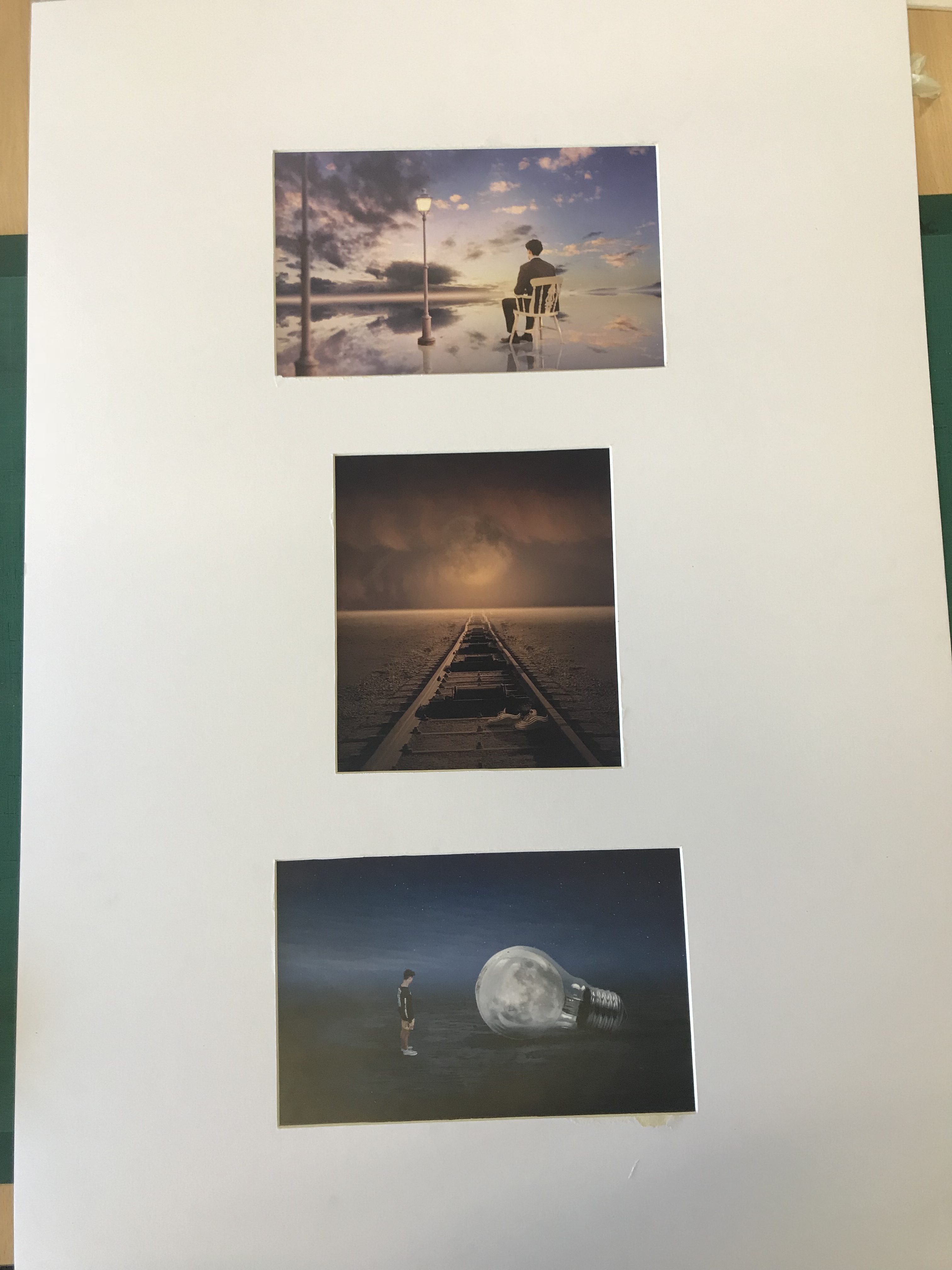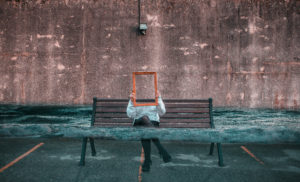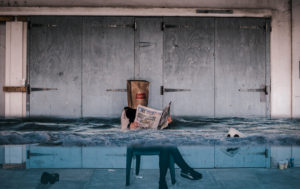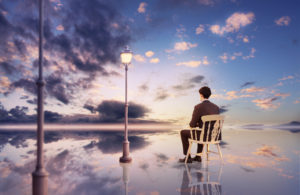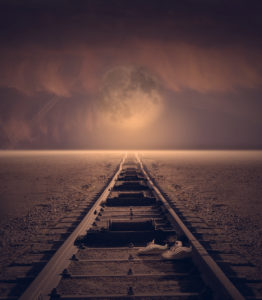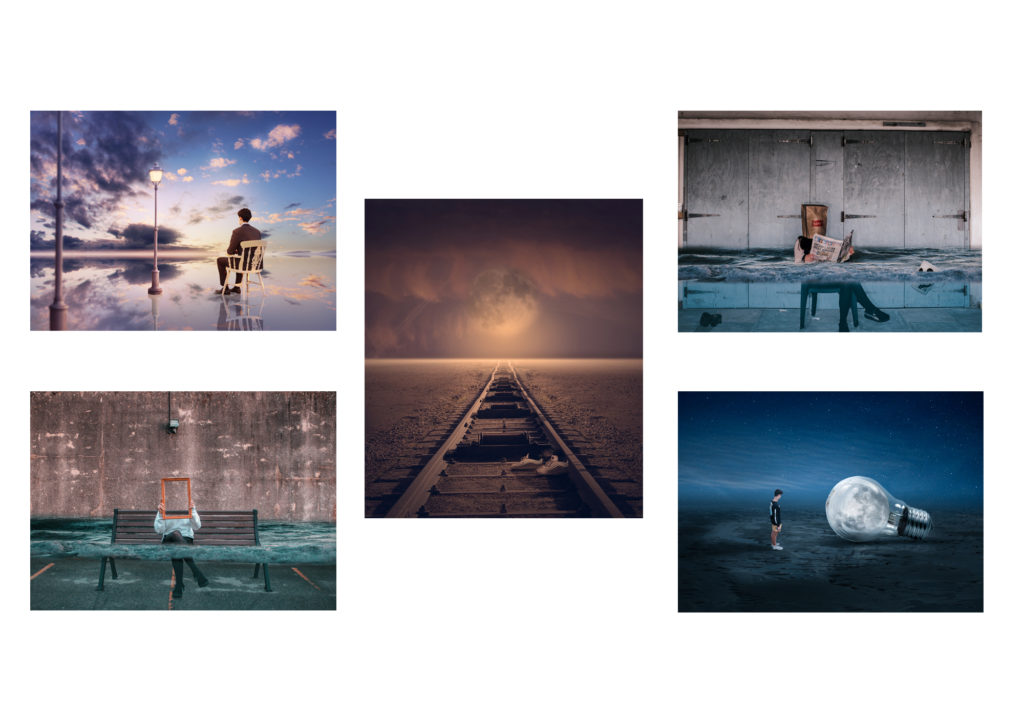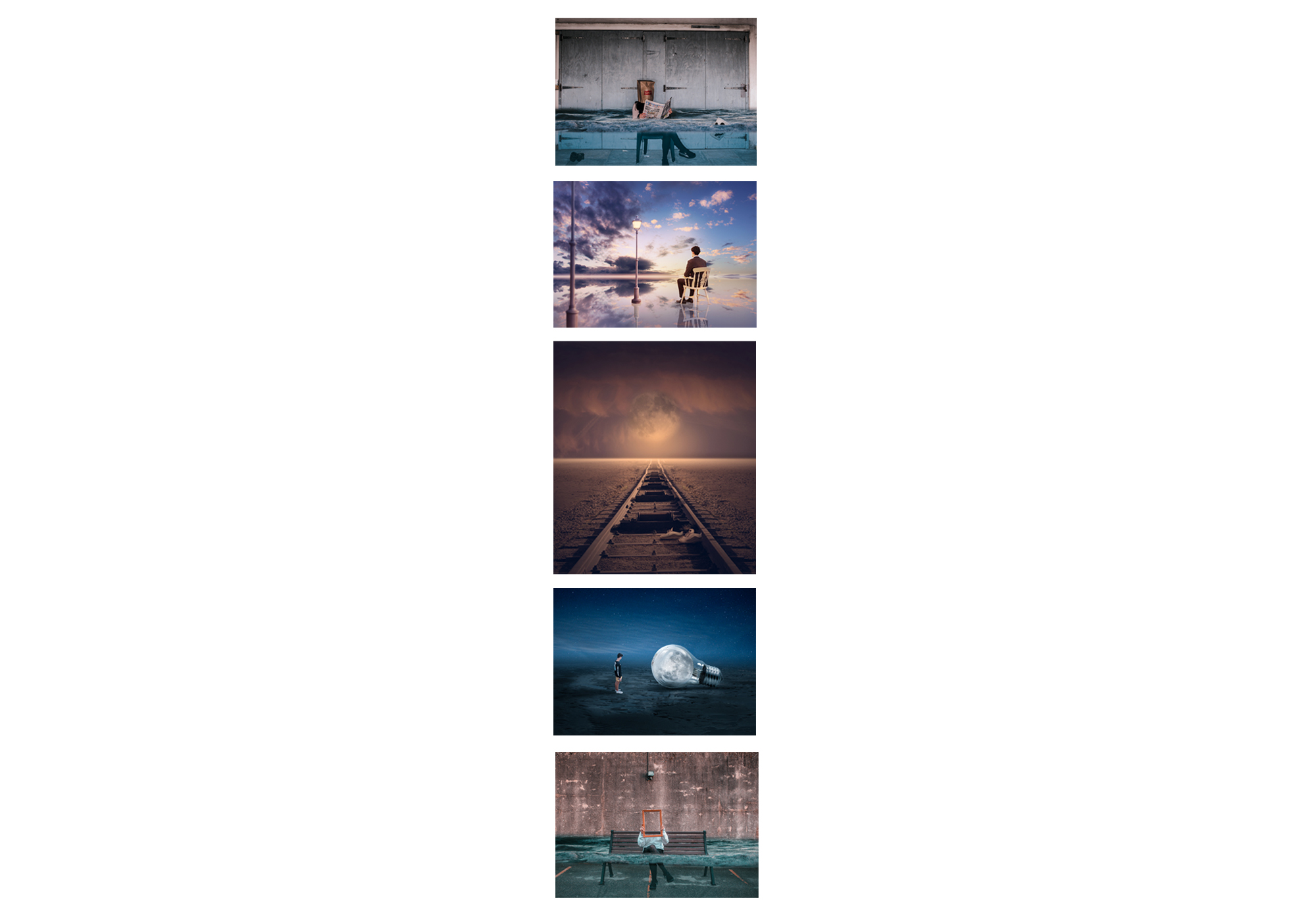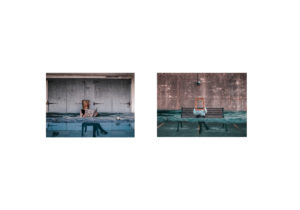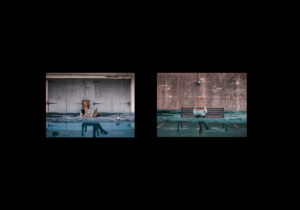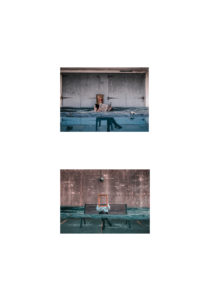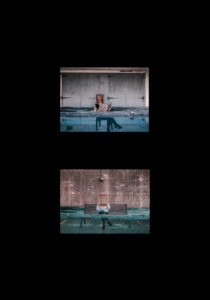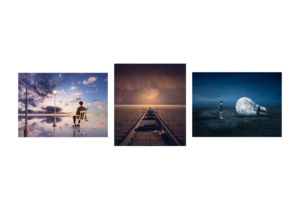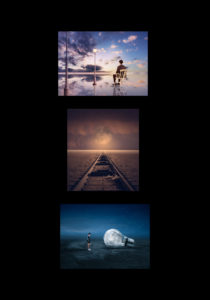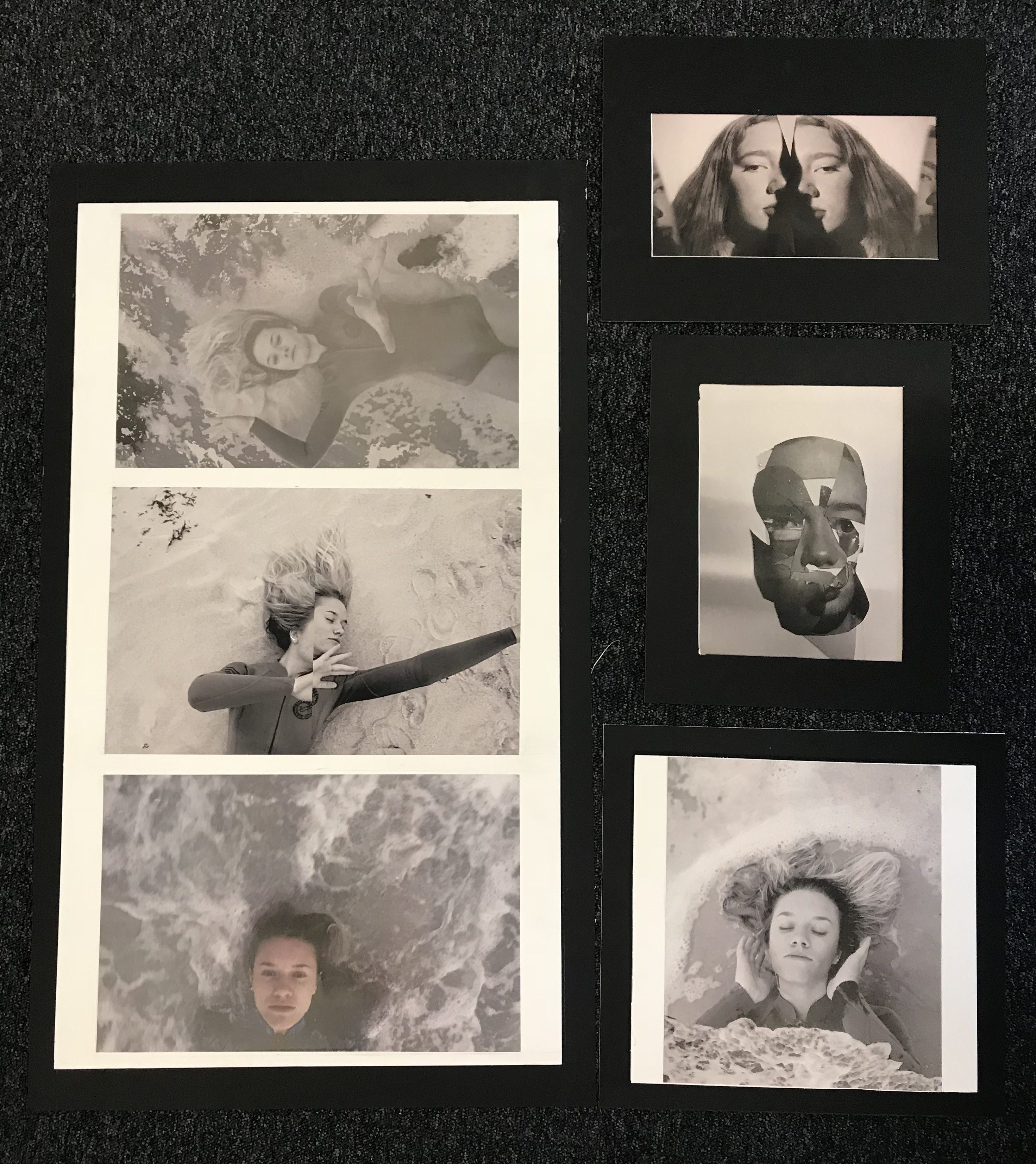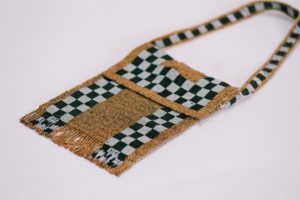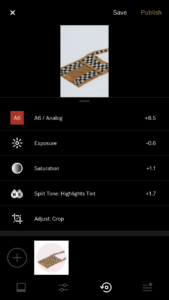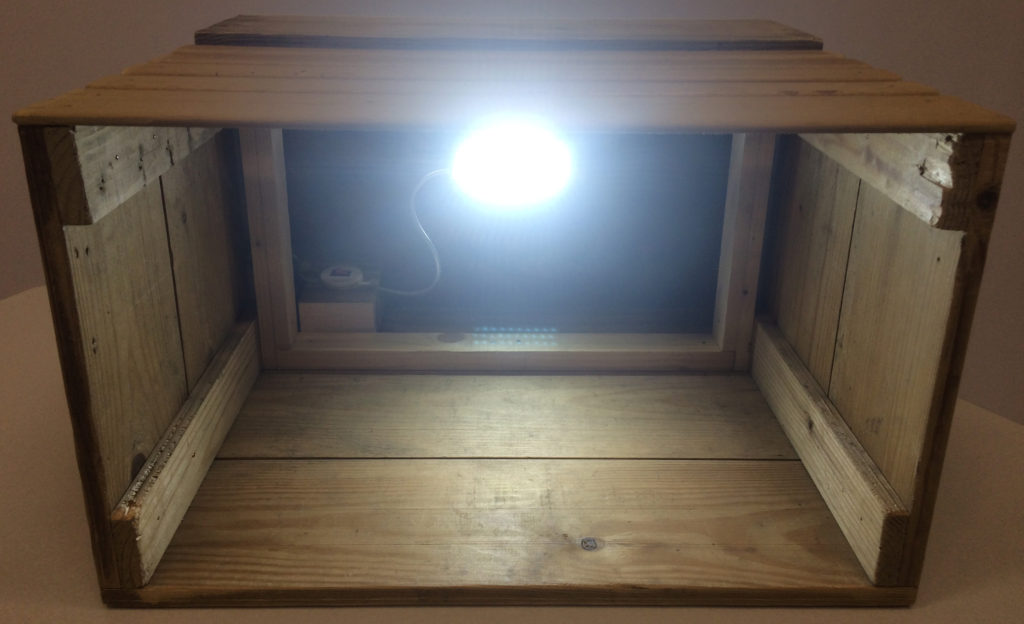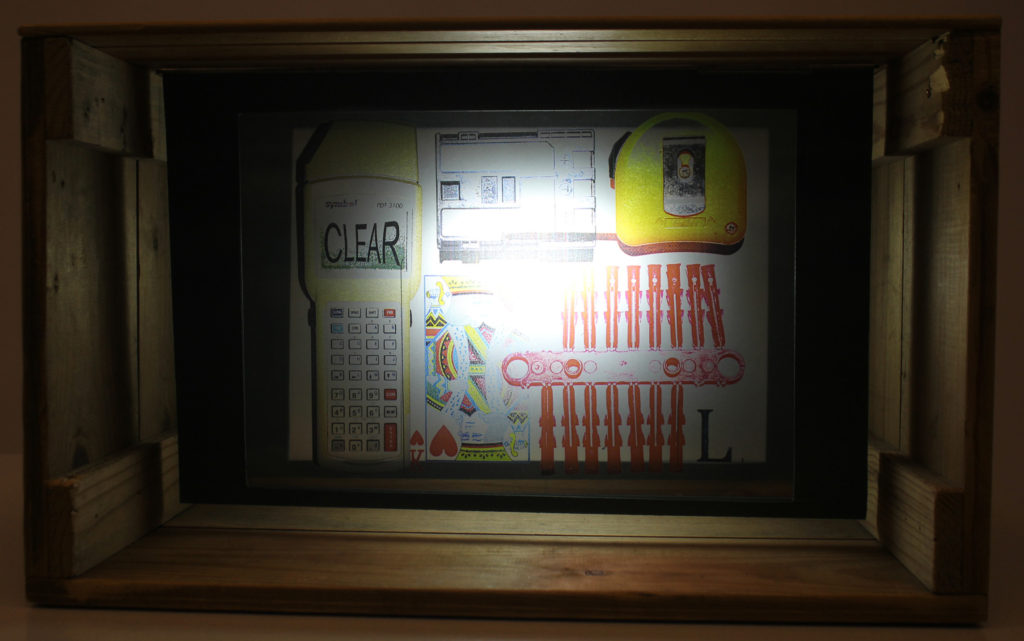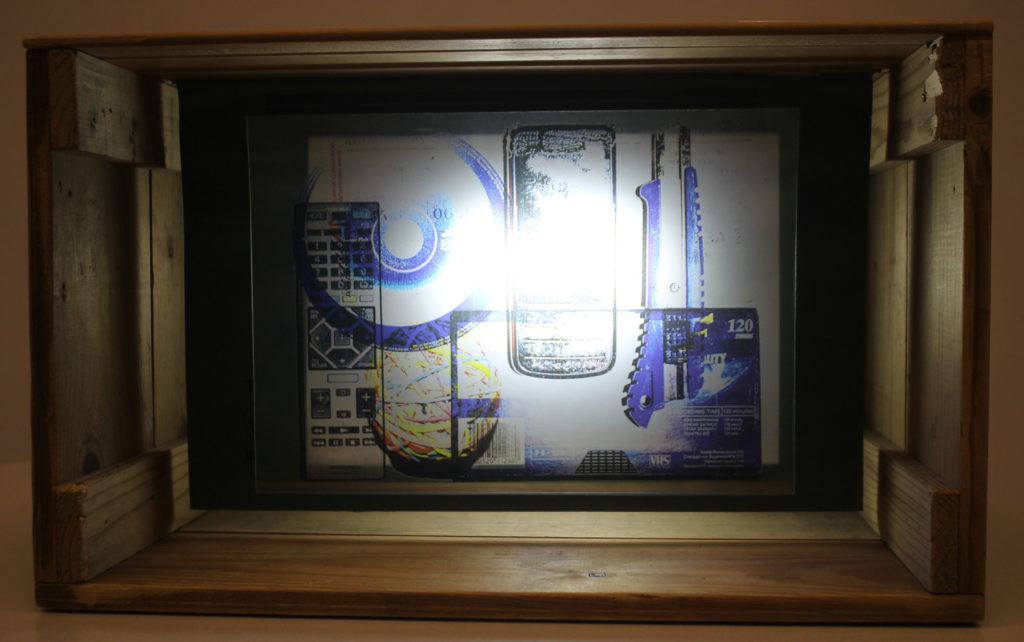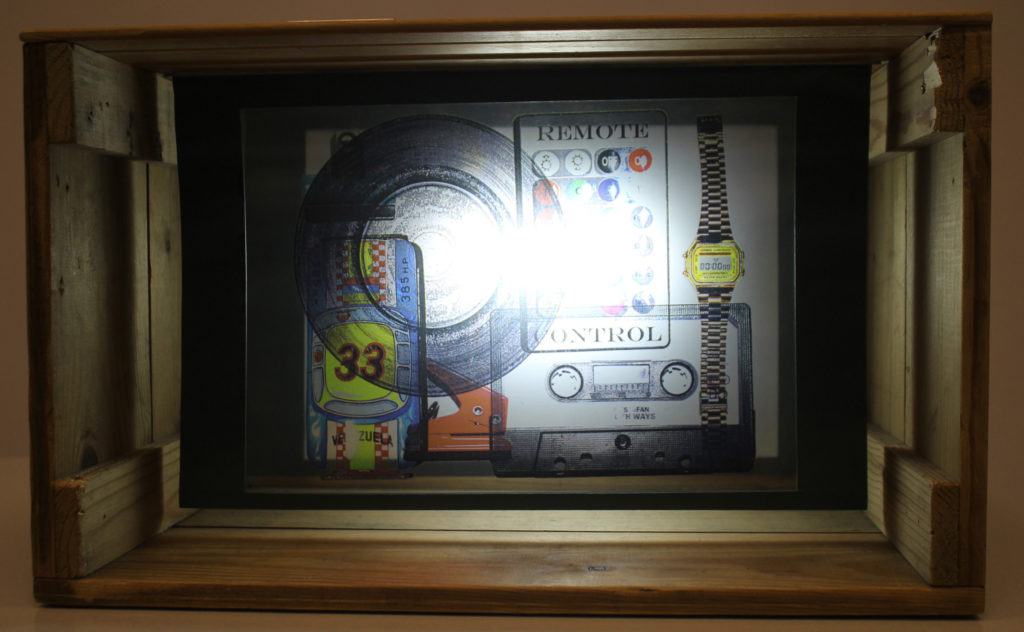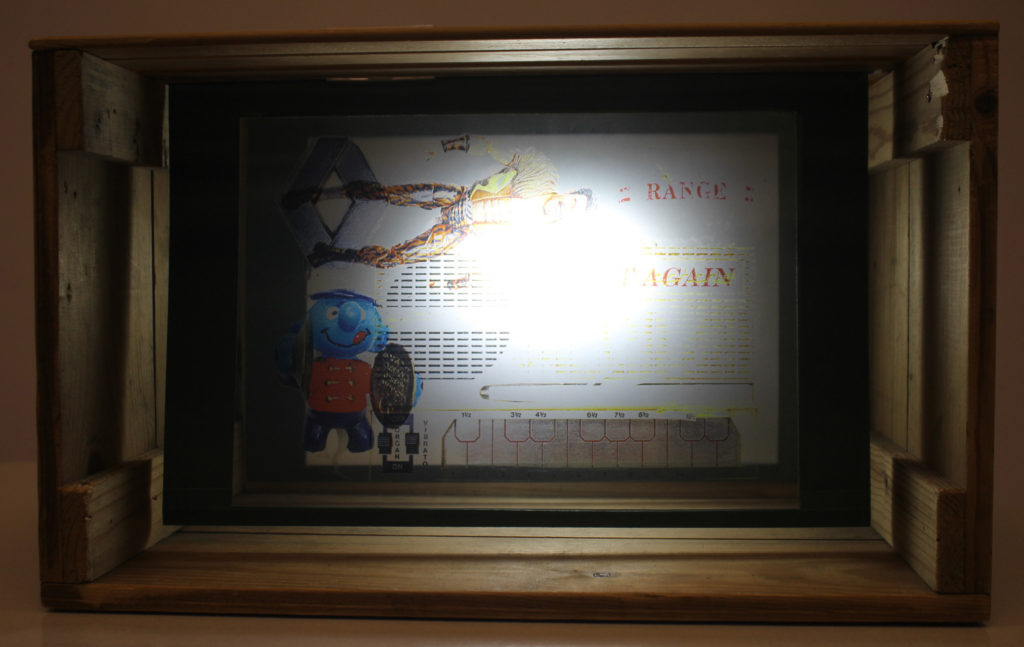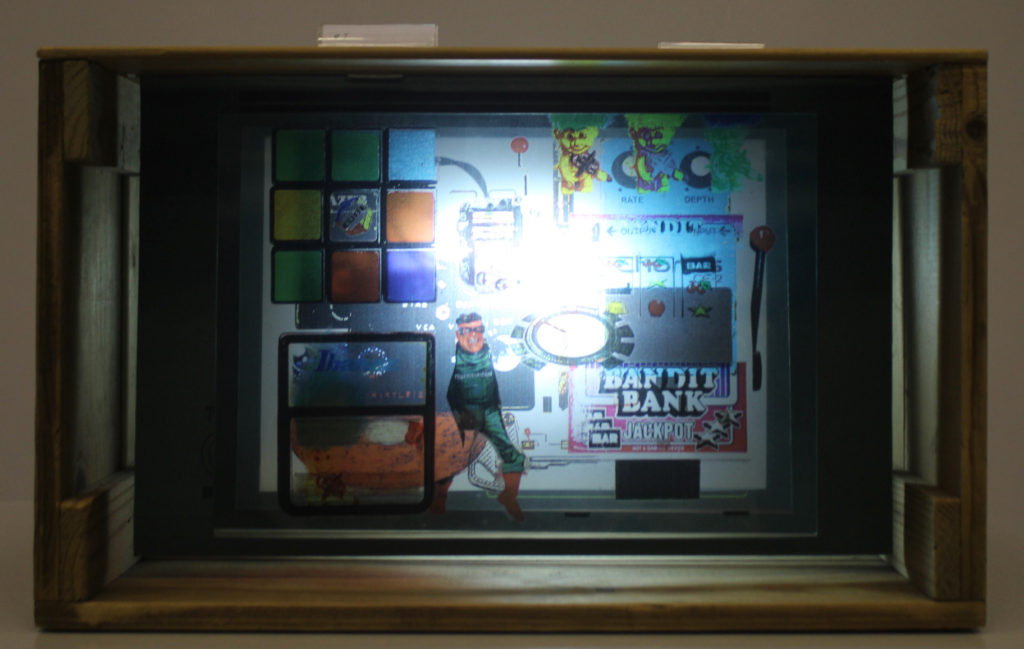Richard Tuschman began experimenting with digital imaging in the early 1990s, developing a style that synthesized his interests in photography, painting and assemblage. Tuschman holds a BFA from the University of Michigan in Ann arbor, and has been exhibited widely, both in the US and internationally. His photographs have been published on numerous online magazines/journals including Slate, LensCulture, LensScratch and Huffington Post. Tuschman lives and works in New York City.
Hopper Meditations is a photographic response to the work of the American painter, Edward Hopper. Richard Tuschman originally began by basing each work on a specific Hopper painting however progressed to create his own compositions inspired more by Hopper’s style and vision.
Tuschman created his own sets by digitally marrying dollhouse-size dioramas with live models. A lot of the furniture is standard dollhouse furniture, but he also made some himself. He photographed his models separately and photoshopped them into the scene.
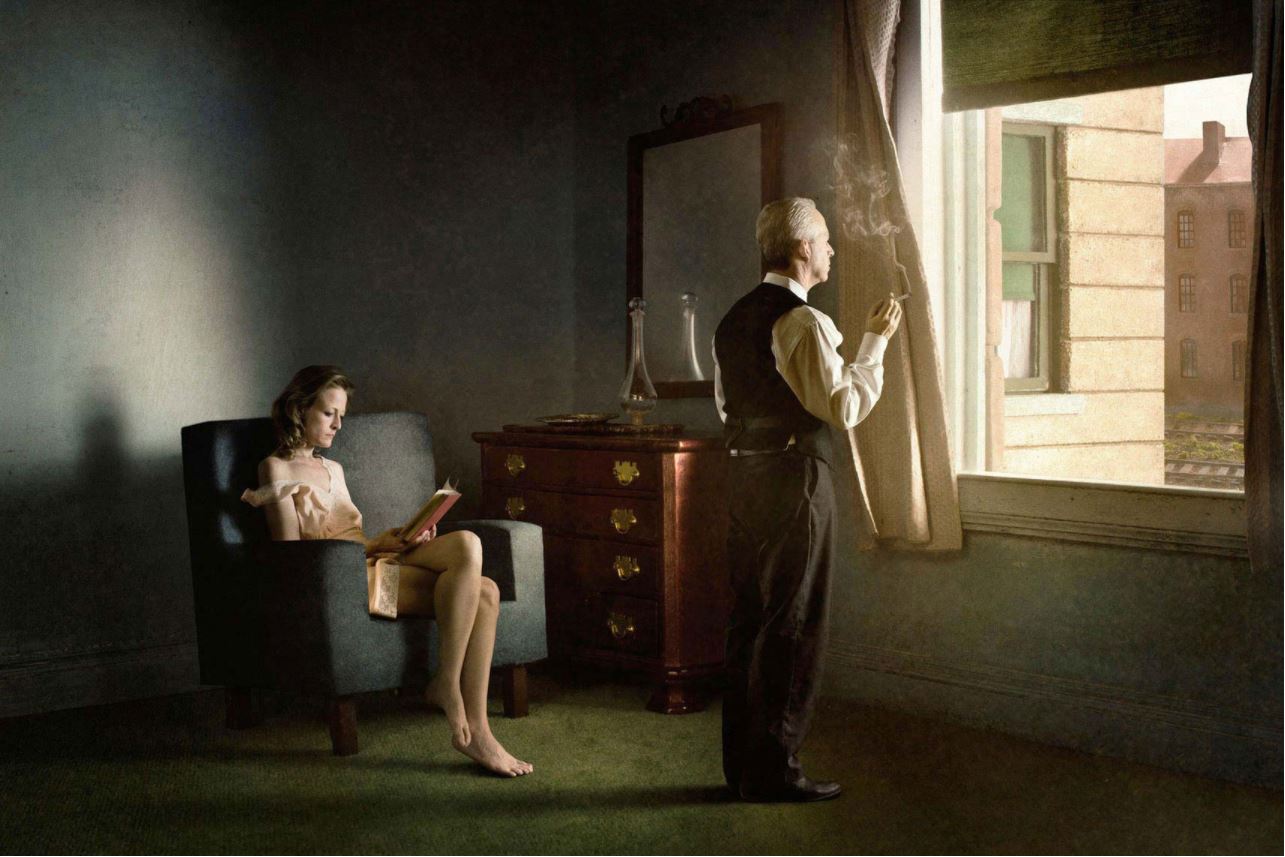
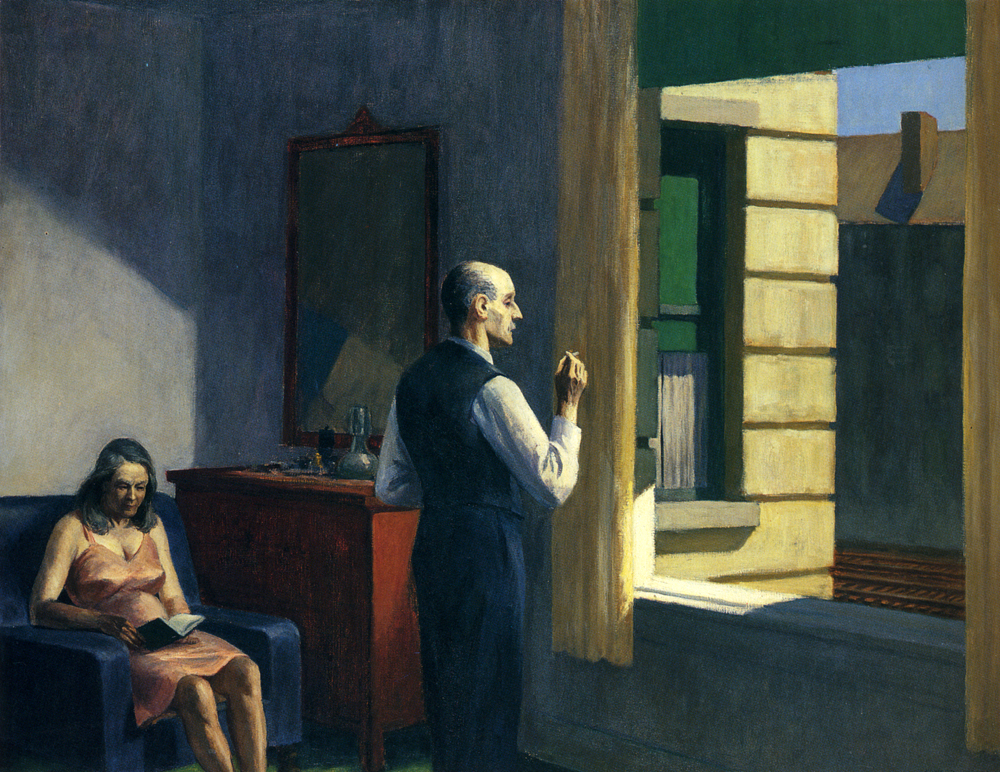
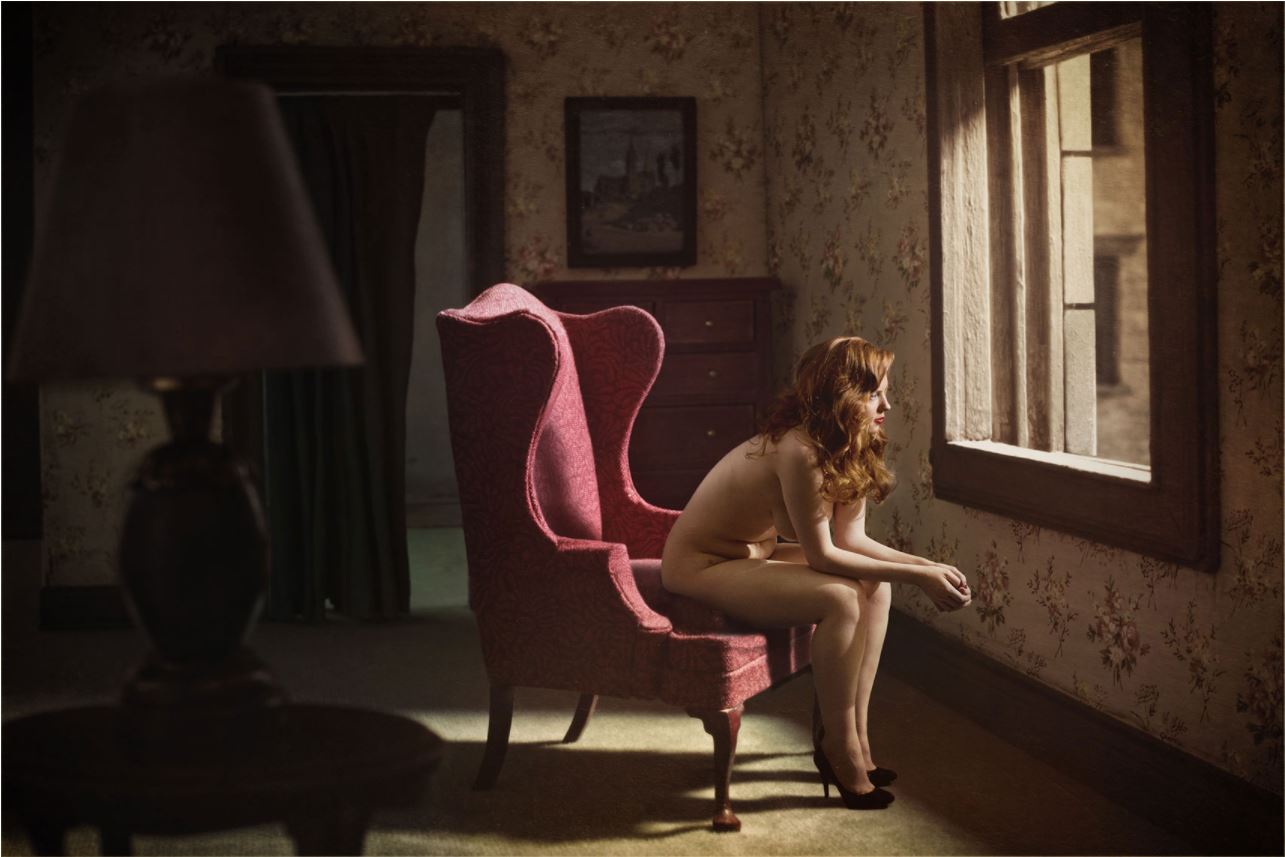

Image Analysis

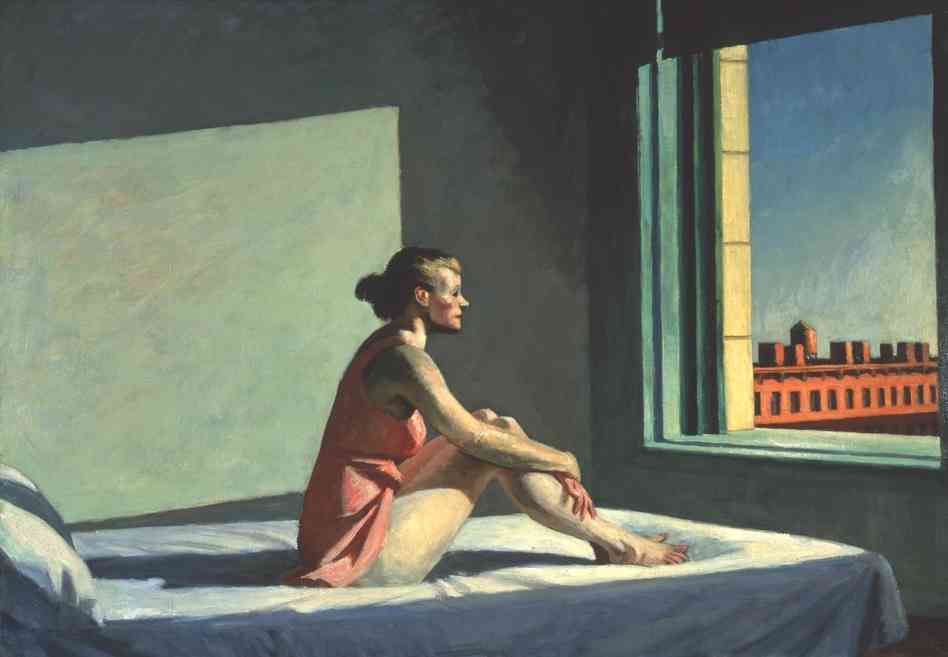
-The natural lighting in Hopper’s Painting is shown coming from a window, Tuschman recreates this with his own made set. The images have an overall quiet narrative presented by the emotional states of the models in both images. Richard Tuschman manages to heighten this feeling using dramatic lighting to create shadows around the model. However, Tuschman imagines the lighting almost as another character that echoes and evokes the inner life of the woman on the bed in comparison to Hopper who uses his lighting more harshly.
-The interior of the room has a cold temperature in comparison to outside the window which appears warmer, showing that isolation can be felt within.
-The woman in the painting, modeled after Hopper’s wife, Jo, faces the sun impassively and seemingly lost in thought. Her visible right eye appears sightless, emphasizing her isolation. The bare wall and the elevation of the room above the street also suggest the bleakness and solitude of impersonal urban life.
